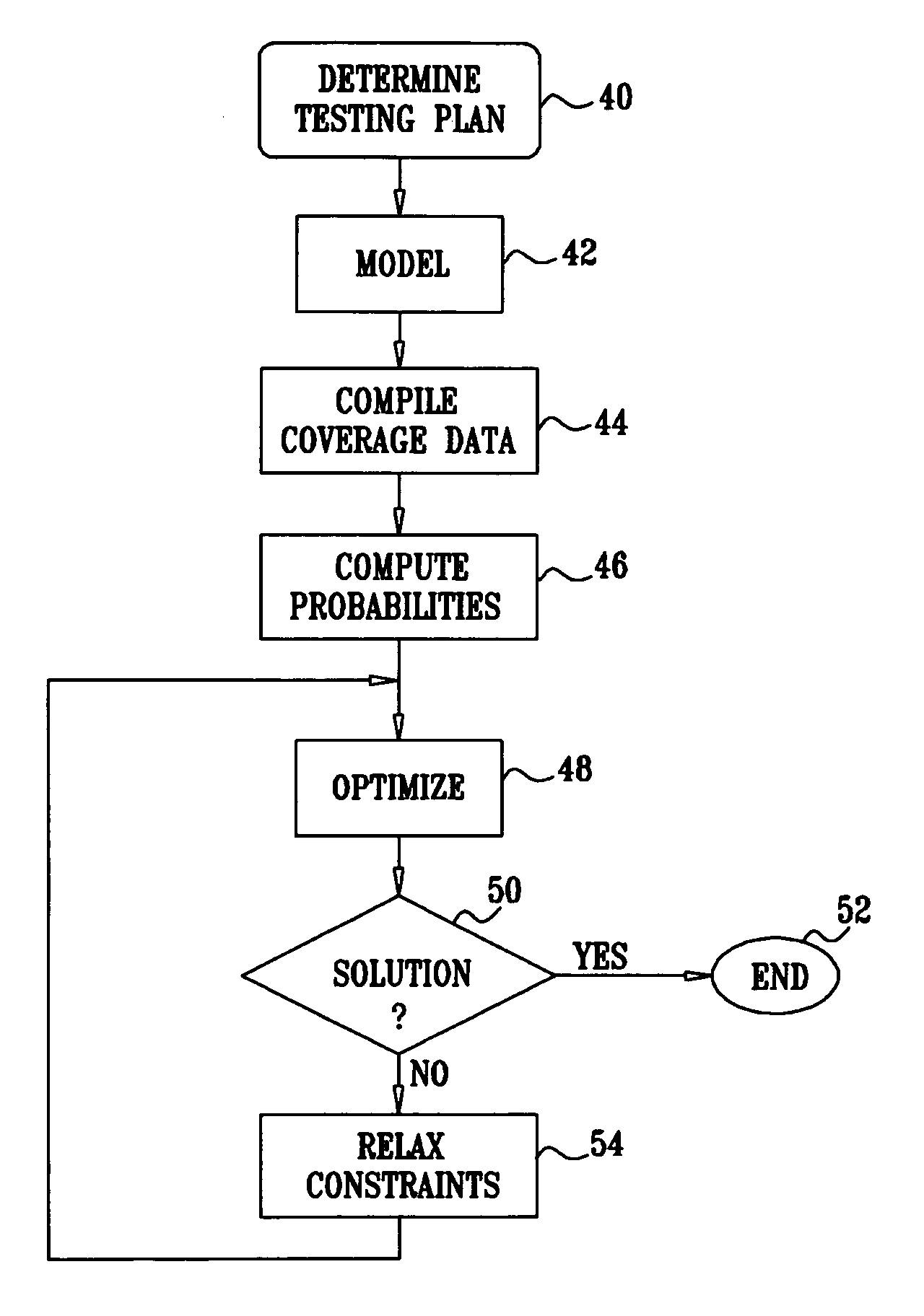Probabilistic regression suites for functional verification
- Summary
- Abstract
- Description
- Claims
- Application Information
AI Technical Summary
Benefits of technology
Problems solved by technology
Method used
Image
Examples
example 1
[0098] The first experiment concerns a subset of the coverage model that deals with unrecoverable errors (UE). The size of the UE space is 98 events, all of which are relatively hard to cover.
[0099] The goal was to construct a regression suite by selecting, from a task-coverage repository of test specifications designed to cover the UE space, a much smaller subset that produces a coverage comparable to exhaustive execution of the entire repository. The repository consisted of b 98 sets of test specifications, each of which was designed to provide the best possible configuration covering one of the events. The inherent randomness in the test generation mechanism enables covering other events as well during a simulation.
[0100] The regression suite and activation policy were generated using the linear relaxation of the formalism depicted in Definition 1, using a lower bound of ½ for the expected coverage for each task. The resulting regression suite was constructed using only three p...
example 2
[0102] Reference is now made to FIG. 6, which is a plot illustrating a second experiment that targeted the entire SCE coverage model, which has 564 tasks, in accordance with a disclosed embodiment of the invention. Most of the tasks are not hard to cover. The repository consisted of 126 test specification, which were generated during a coverage-directed generation (CDG) process, which is described in the above-noted document, Coverage-directed Test Generation for Functional Verification Using Bayesian Networks. The regression suite and activating policy were generated using the soft probabilistic regression formalism depicted in Definition 3, using a lower bound of ½ for the expected coverage for each task. The resulting regression suite, indicated by a solid line 78, was constructed using 11 parameter sets, and the activation policy specified 32 simulations.
[0103] Indeed, as depicted in FIG. 6, after fewer than two rounds of the activating policy (55 simulations), 554 events (98%)...
example 3
[0104] The following example is an application of the present invention in which a Java SDK was extensively tested on a variety of hardware architectures, national languages, and operating systems. Test cycles lasting about 4 months involved tuning of parameters, such as heap sizes, garbage collection algorithms, the Java just-in-time compiler (JIT). The project also involved testing the SDK using dependent software, such as Web browsers, and various IBM products, e.g., WebSphere Application Server (WAS), DB / 2, and Host-on-Demand.
[0105] The complexity of the project can be appreciated by the fact that there were more than 300 environments to install and test. Parameters needed to be tuned to execute over 70 test suites controlled by more than 10 testers in two remote geographic sites. Furthermore, it was desirable to give individual testers control of test machines on which to run their tests.
[0106] Analysis of defects found during the previous test cycles and in the field showed ...
PUM
 Login to View More
Login to View More Abstract
Description
Claims
Application Information
 Login to View More
Login to View More - R&D
- Intellectual Property
- Life Sciences
- Materials
- Tech Scout
- Unparalleled Data Quality
- Higher Quality Content
- 60% Fewer Hallucinations
Browse by: Latest US Patents, China's latest patents, Technical Efficacy Thesaurus, Application Domain, Technology Topic, Popular Technical Reports.
© 2025 PatSnap. All rights reserved.Legal|Privacy policy|Modern Slavery Act Transparency Statement|Sitemap|About US| Contact US: help@patsnap.com



